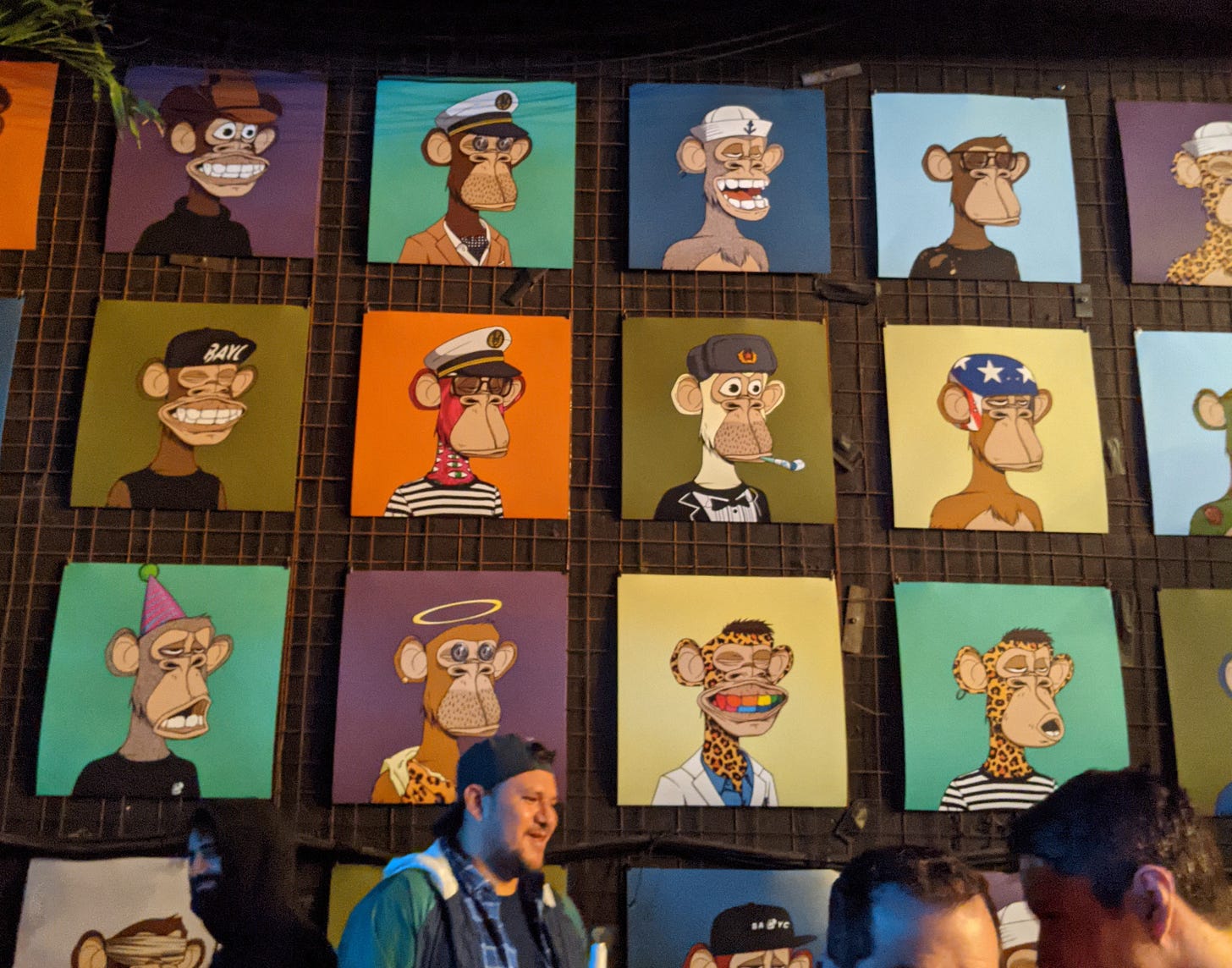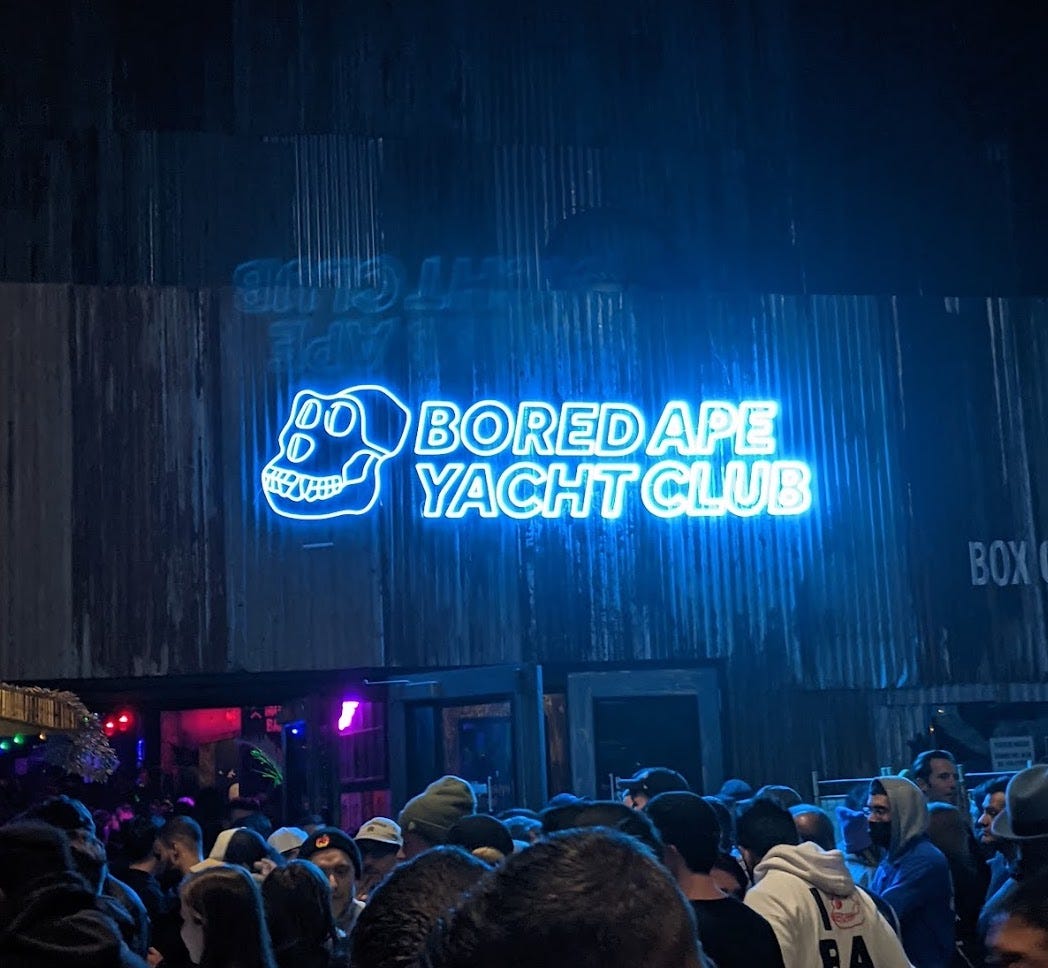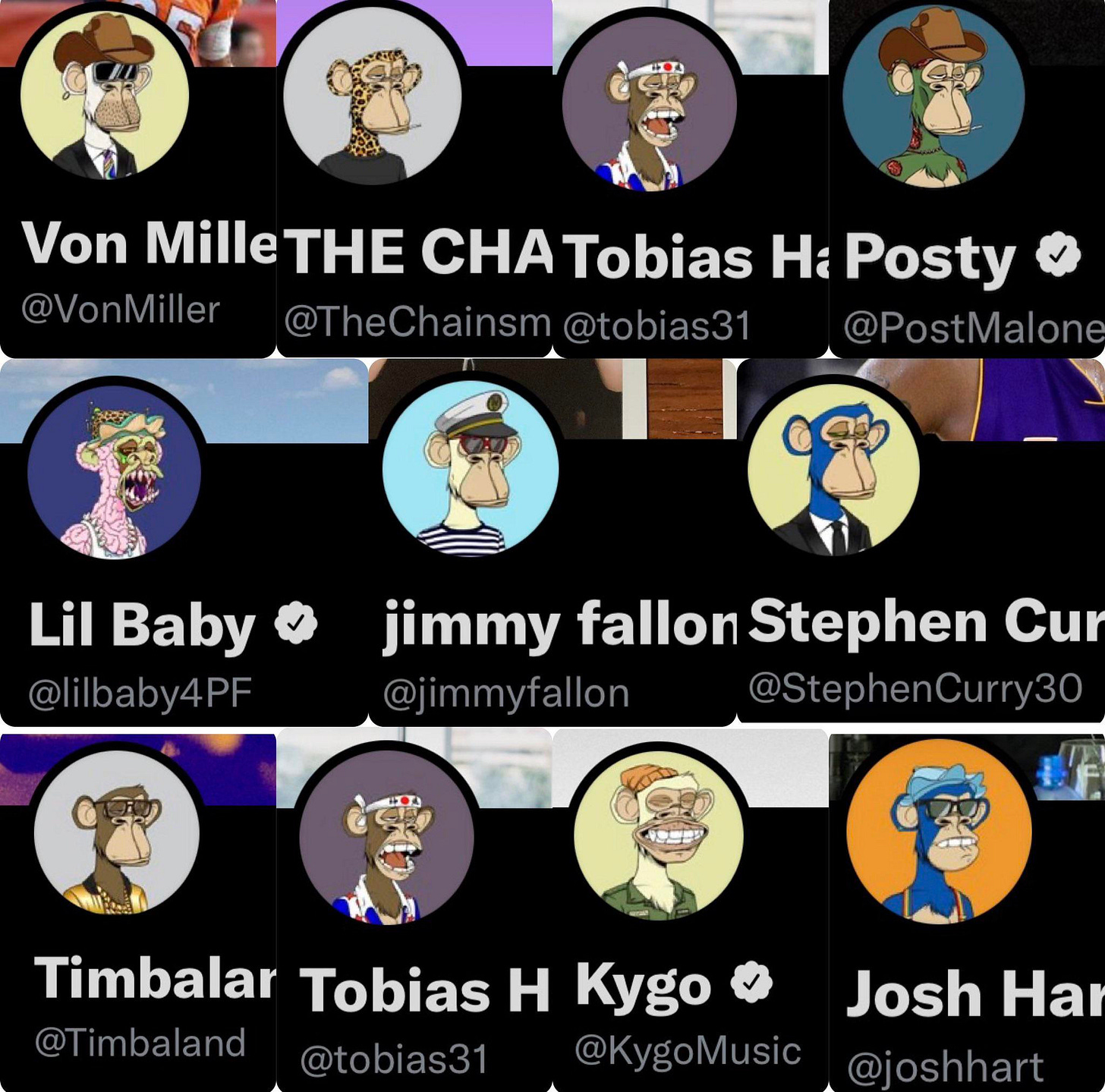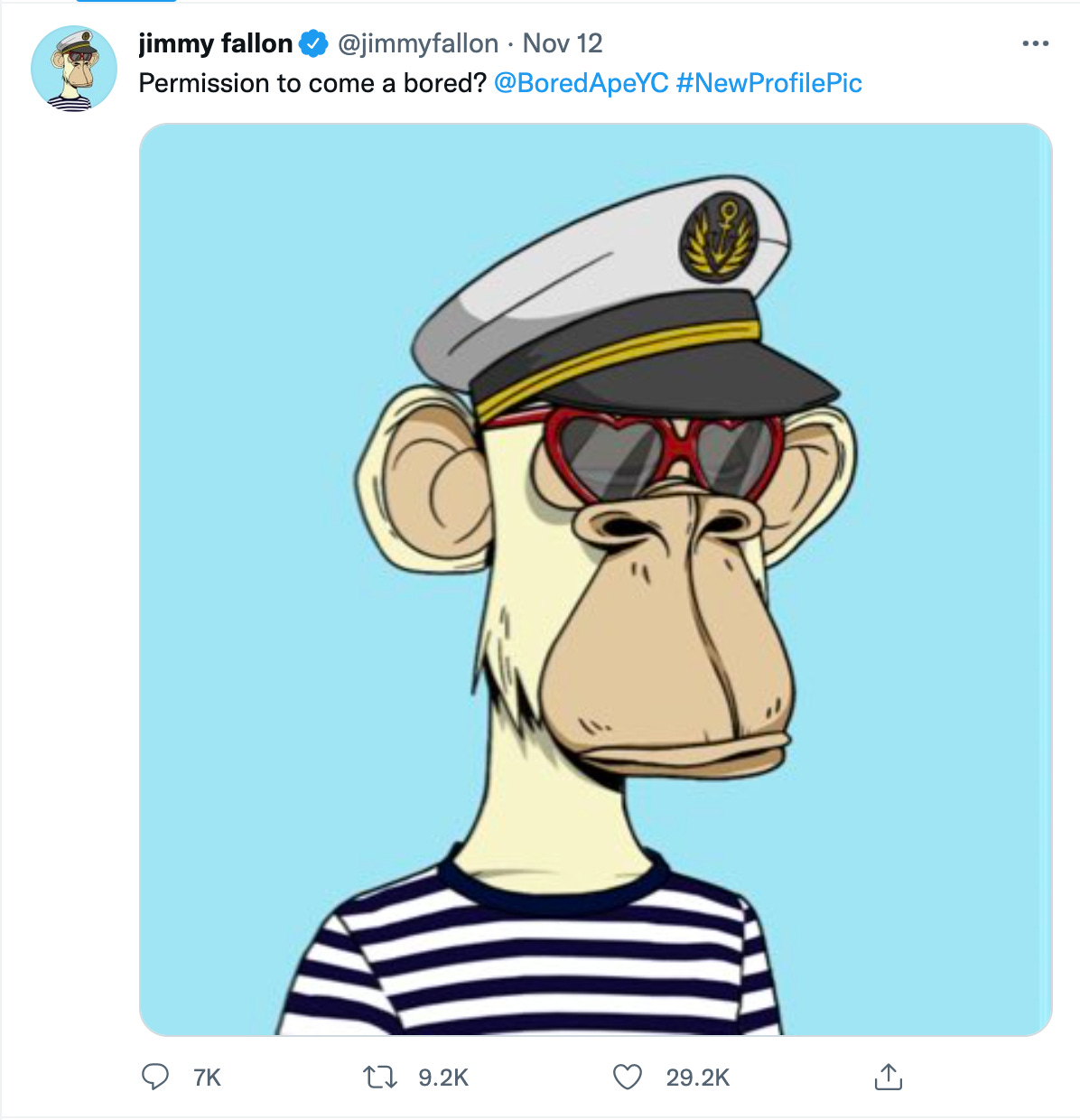This is Punk 6529. No, I don’t own it - in fact, you may recognize it as the profile picture of the prolific twitter account punk6529. I just copied it, and now I’m using it as the banner for my article. Does me copying it make the roughly $200k purchase price a scam? Actually the opposite: it only increases its value.
Regardless of your personal feelings towards NFTs, the more we discuss and set them as profile pictures, genuine or not, the higher the value rises for the holder of the original.
First, I’ll lay out the case for why NFTs have any value at all. Next, I’ll explain how copying and saving NFTs seem to co-opt the value and seemingly refute the underlying value hypothesis. Finally, I’ll defend the main point of this article: copying NFTs increase their value.
For the purposes of this article, I’m examining only the top NFT projects that have already broken out into the mainstream awareness, like CryptoPunks and Bored Ape Yacht Club.
The value behind Art NFTs
Profile Picture (PFP) NFTs are valuable because they are a brand that immediately signals inclusion into a tribe. Let’s break that down.
NFTs as brands
NFT projects are brands because they are immediately recognizable and it is a status symbol to own one.
Drawn, or generated, in a similar style, each Profile Picture NFT is recognizable as part of a larger project. Although each individual piece differs in certain attributes, some being rarer than others, they are inequitably part of the same brand.
Take a twitter profile picture for example. If it’s a picture of your face, that’s nice, but you’re just another human being on the planet who I don’t know. If it’s an Ape NFT, and I also happen to have an Ape NFT, then I know that we have something in common. The same could be said for school affiliation, location, or even hobbies listed in the bio—they all are ways of signaling to all of the other random humans on the internet that we might have something in common. Except in the case of PFP NFTs, they are bright, flashy, and visible everywhere as your icon—not hidden in the text of a bio.
Just like any collection of brands, there are some that are more valuable than others. Certain universities have more brand power than others and called themselves “The Ivy League”. If someone tells you they graduated from Yale, that has a different impression than if they had graduated from a community college—regardless of their actual education, and that’s the power of branding.
Similarly for NFTs, some brands carry more weight. In this nascent industry, it’s often the oldest projects that are deemed the most valuable. Crypto Punks was founded in June 2017 as one of the first NFTs on the Ethereum blockchain, and now the floor (cheapest) punk is 80 ETH ($371,636.80 USD). So at the very least, if you see a punk on Twitter, you know they have the brand of “very rich”.
Other profile picture collections are coming out every minute, and they are most likely never going to reach the same brand awareness as the top projects. So although all NFT projects have the potential to blossom into a renowned brand, most won’t. Some might be deliberate scams and cash grabs. Nonetheless, this doesn’t negate the brand power of the top projects: when you see a PFP NFT on Twitter, you immediately associate it with emotions, good or bad, and that is the power of a brand.
NFTs as tribes
It’s human nature to want to belong to a group. Since our early evolution, we’ve organized ourselves into tribes for protection and community. NFTs are the latest way to identify and work with people in your tribe.
The first, and most obvious, step is to use the NFT as a profile picture on Twitter, Discord, and other social media. This signals membership in the tribe. It makes it more likely that other members of the tribe, when they interact with you on the platform, will like, retweet, and respond to your messages. After all, when judging the value of random messages we receive on the internet, we have few signals at our disposal. Using the largest and most flashy piece of real estate, the profile picture, is often enough to instantly signal that “hey, we have a lot in common and you should respond to my message".
There are other private communication channels as well. Almost all NFT projects have a discord, a way for token holders to communicate. In these channels, people can work together and build together as a community. Shared ownership of a limited resource, and the accompanying communication channels, bind people together into tribes.
“Always willing to help out a fellow ape”—overheard during an NFT.NYC panel on NFT communities
Tribal Events
Joining the tribe brings tangible benefits. In addition to the aforementioned digital communication channels, there are now physical parties and events that are only available to token holders.
At the NFT NYC conference in November 2021, Ape holders were verified as holding genuine NFTs by inspecting their wallets. They were then granted a physical yellow wristband which granted admission to various events through the weeklong conference.
The warehouse concert included performances by Beck, the Strokes, Lil Baby. It had an open bar, and was completely free to members of the Ape tribe (ignoring, of course, the 6figure JPEG that was needed to get in). All of the tribe members there could rest assured that they were at a very cool, and very exclusive, party, made possible by their ownership of an NFT.
Famous Tribe Members
The strength of a tribe comes from the power of the individual members. And for certain NFT brands, celebrities have already flocking to pledge their allegiance.
Wouldn’t you want to be part of a club of the rich and famous? The networking value of being in the group skyrockets when you could have a direct line to any of these celebrities.
The ‘Save As’ Argument
Nonetheless, can’t I forge the brand and pretend to belong to the tribe, just by right clicking one of these punks and saving the image? I can set any image to be my twitter profile picture, so why not choose a coveted NFT for FREE?
The truth is, all brands can be forged and all tribes can be infiltrated. A Harvard degree will unlock jobs for you, and all that can be bought with a forged diploma. NFTs fall into the same trap, except arguably easier, since through the power of digital duplication, you can copy instantly and exactly. To an observer, the ‘fake/copied’ profile picture will be indistinguishable from the original!
Does this mean that NFTs are a scam and have no value? Not quite.
Copying actually increases NFT Value
Brands only have value because people recognize them. The more they are shared, discussed, and talked about, the more the originals are worth. This isn’t a new concept—the same has been true throughout history for traditional art. Sharing and copying NFTs—even as fakes—increases the underlying value of the brand because more people are being exposed. In fact, copying implicitly acknowledges the underlying value, as the JPEG is worth spending time and attention to imitate.
The classic example of attention leading to increased value is the Mona Lisa. Unknown and uncared about, it wasn’t until a famous art theft that it rocketed into the public consciousness as a painting of note. Similarly, famous memes enter the zeitgeist and become more impactful the more they are shared and discussed.
Every time someone sees an NFT profile picture for the first time, they ask themselves and their friends, “What’s going on here with these NFT things?” In effect, even the copied pictures are breeding grounds for increasing attention, and therefore increasing value.
The original holders of an NFT have a way to turn all that extra attention into cash. NFTs are provably finite, similar to authentic physical pieces of art. So while there might be many copies of the JPEGs floating around of Punk 6529, there is only one that is signed by Larva Labs as being the original.
That original is the key into the tribal discords, the tribal parties, and ultimately the brand value at sale time. Even creating another NFT that has the exact same JPEG will fail under scrutiny, as the authorship data won’t match the original, genuine, project. I saw people turned away at the door of the Bored Ape parties for attempting to impersonate Apes using this method—the fake wasn’t enough to gain entry to the tribal event. While fakes might work trivially on Twitter (at least until they implement the ability to verify ownership), they won’t work for the deeper value of tribal communication channels and events.
More copying and more sharing results in more conversations about NFTs, and therefore increasing the underlying value for the NFT holder.
Conclusion
NFTs are nascent, and chances are that in the future, they’ll hold value very differently than profile pictures of apes and punks. For now though, if you aren’t a fan of the current incarnation, you’re better off looking the other way rather than stoking the fire and increasing the value of these NFT projects.









